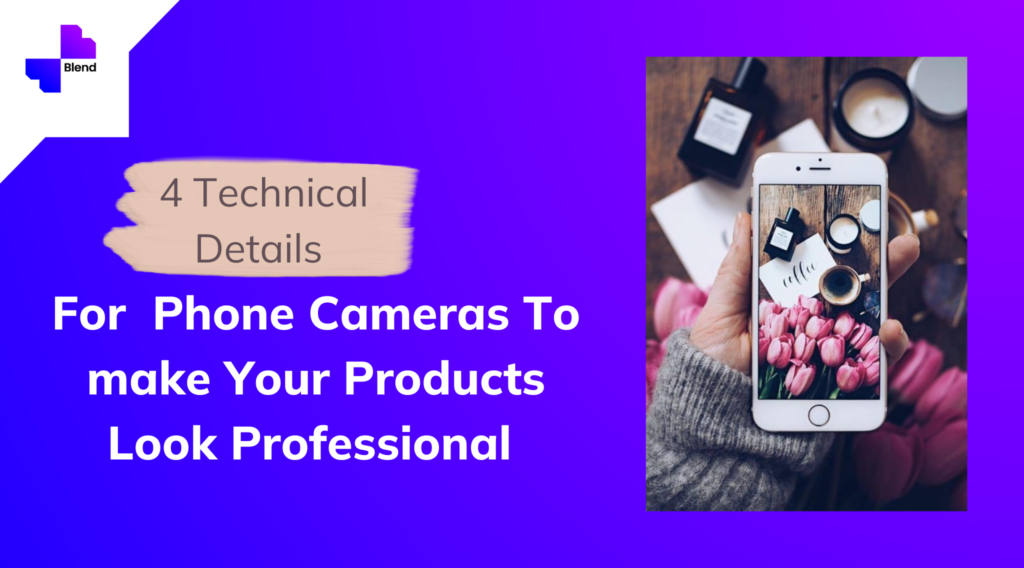You don’t need a Professional Product Photographer in 2022 if you have a Smartphone
Are you someone who owns a DSLR or an SLR camera but still prefers to click pictures with your phone? Is your DSLR biting dust just because your phone’s camera gives better results and is also convenient to use? If the answer is yes, you are no exception. Today, companies are coming up with new versions every year and can get their customers to upgrade just by selling a better phone camera feature. And yes, just like that, we are sold! Panorama, portrait, aperture, shutter speed – these terms are no more alien to our ears. But, these can still sound too technical to a novice. Mobile photography is a huge thing now and if you are spending so much on your new upgrade, then you might as well want to gain a little more knowledge on the technicalities, isn’t it? So, let’s get you started!
Aperture
Aperture is the opening in your phone camera’s lens that controls the amount of light that can pass. To put it into an analogy, you can compare it with the pupil of our eyes.
Aperture is generally identified by the f-number. An f-number of 2 is represented as f/2 which means the focal length is twice the aperture. Similarly, if the f-number is f/4, it means the focal length is 4 times the aperture.
The lower the aperture, that is, the lower the f-number, the wider the opening of the curtain of the camera hole. Wider opening, in turn, allows more light to pass through the lens and the camera sensor. Lower aperture also helps with increased sharpness of the image and lower chromatic aberration (coloured fringes in the areas of a photo having higher contrast).
Depth
Phones which have cameras as their selling point boast about their depth cameras. These are dedicated cameras in your mobile which are designed to sense the depth and distance of a subject. It makes use of the concept of light speed to determine the time it will take for a reflected light beam to return to the phone camera sensor.
With new phones coming in, the portrait effect has become vastly popular and it is a result of depth sensors that effectively helps in separating the background from the foreground and give an effect called the shallow depth-of-field bokeh effect.
The most popular type of depth camera right now is the time-of-flight (ToF) camera which collects depth data and creates a 3D map of the scene for the phone sensors to capture. Technology has come very far and while this was used in augmented reality, it has been adopted in mobile photography. Due to this, portrait photography is now just a click away!

Focus
When buying a new phone, most of us give importance to the camera. The next most important thing we consider is the megapixels of the phone camera. But can we define quality only by megapixels?
Now, mobile companies also understand their customers and with more launches, they want to make great photography a cakewalk for us. And that’s where they are trying to perfect focus or auto-focus. We might not be able to judge the distance of the object from the lens and that leads to blurred images. With an adjustable focus in today’s phone cameras, this problem is getting solved, leading to sharper images.
Shutter Speed and f/stop
The shutter speed of a mobile camera determines the time for which the lens of the camera will remain open for light to enter and reach the sensor. The time is measured in seconds and fractions of a second.
For example, if the shutter speed is 1/30, the sensor will capture the image for one-thirtieth of a second.
As more duration allows more light to reach the sensor, it results in brighter images. But there is a catch here! More duration, of say, 30 seconds is a lot of time and in that period, if the object or your phone camera moves even slightly, the result can get blurry. To solve this problem, one can use a mobile tripod.
Due to this reason, it is easier to shoot non-still objects like a landscape at a slower shutter speed. But, even if you are using slow shutter speed to shoot moving objects, it can add a creative dimension to your photos (Think those blurry yet dreamy light trails while clicking traffic images in the city lights)!

How to Elevate your Photos with Blend
Once you get accustomed to using these settings, there would be no going back and while everyone in your circle might have the same phone, not everyone would be able to click the same kind of photos! Isn’t that cool?!
However, you can elevate your photos even further by using an online Product Photo Editor like Blend.
With Blend, you can –
- Remove and blend backgrounds from your product images
- Have hundreds of AI-powered props, backdrops, stickers to choose from
- Push your images directly to social media and e-commerce platforms like Shopify, Etsy, Shopee or Depop
Download Blend – Start Removing and Editing the Background of Your Product Images today
While the website is here, you can directly go to the Google Play Store for Android and iOS Store for iPhones to get started with background removal and creating professional quality images today!
We are also building our Seller Academy with resources to help sellers up their game on e-commerce platforms — with 200k+ users and counting, and a Web App coming soon, Blend is changing the outlook to e-commerce listing.

